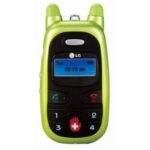If you’re not an electrician, this information is still useful. You can learn what your old RV needs in the way of a modern electrical system.
Okay, some folks get upset at the word “old.” Let’s switch it to “vintage.” That’s sounds better.
The vintage RV’s were built in a time before cell phones/chargers, computers, stereo systems, hair dryers, satellite TV dishes, etc. Most electrical items you plugged in were electric skillets, light bulbs and radios.
Since many vintage RV’s were built without an air conditioner, there was no need for more than one circuit.
Some were manufactured with only AC (grid) power in mind, others (mostly home built) were designed for DC- battery power. Still others incorporated both, but with few outlets.
I’m not suggesting everyone should tear out the walls of their RV’s and replace all the wiring. If you’re planning to overhaul the inside of your RV, that could be an option. Adding a circuit board and routing different outlets to each circuit does require opening some of the RV’s walls and routing or re-routing wiring. If finances are tight, you can do the job as your funds dictate.
What your rig may need:
Since I don’t know every individual rig, or what each person uses in the way of electronics, this article will give general information.
Even the most modern and high- end rigs today can be manufactured to have only one electrical circuit. Imagine travelling in a $300,000 rig that you have to warn people about using a hair dryer or blow the single circuit.
Make a list:
List your electronics, including the air conditioner. Next to each item, list how much power it uses in amps and watts. This will help decide how many circuits your rig may need.
Let the A/C have it’s own circuit. The washer/dryer should have it’s own circuit. You can still surf the net and do laundry at the same time.
The refrigerator could have it’s own, but it’s power use is generally small. Since an RV refrigerator power is two-way or three-way (DC, AC, and/or Propane), it’s special all by itself. It could have it’s own AC circuit, DC circuit.
Most household circuits are 15 amp or 20 amp. That’s how much power you can pull safely on that circuit. Plug in too many things and the circuit breaker trips.
List how many people use the RV. If you have several family members, each wanting to plug something in, more circuits may be needed. If it’s just yourself, fewer could do. Of course, while the work is being done, you could increase the resale value by adding a circuit or two.
GFCI outlets
In houses, the building code requires GFCI (ground fault circuit interrupter) outlets in bathrooms and kitchens. If any power surge or flux happens, the outlet’s circuit breaker trips and stops the power flow immediately. The speed is amazing- less than a quarter of a second. (Personally, I’d love to see the code demand these for all children’s rooms, too.)
If your RV doesn’t have GFCI outlets in the kitchen or bathroom, it’s a good idea to install them. Every DIY store carries them in stock. They cost a couple dollars more than regular outlets, but they can indeed save your life.
Sit down with the RV repairman or shop representative
For the non-electrician like me, I’m better off hiring this job out. I can replace an outlet, but installing a circuit board, designing circuits and running wires everywhere is beyond me and it’s intimidating.
If a shop or repairman suggested that trying to add circuits to an RV is dumb, me and my money will go elsewhere. While they’re trying to figure out how they tripped the only circuit in the RV (too many times isn’t good for a computer and other electronics), I’ll keep things on and running safe.
If you’re going to do the job yourself, just remember to unplug the RV’s power cord, and turn the battery bank off. Safe is better.
Source: Jim Twamley, “Replacing RV electric plugs,” RV now website, 28 January, 2009




